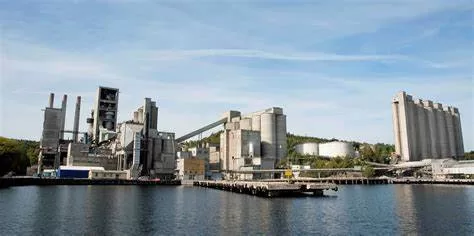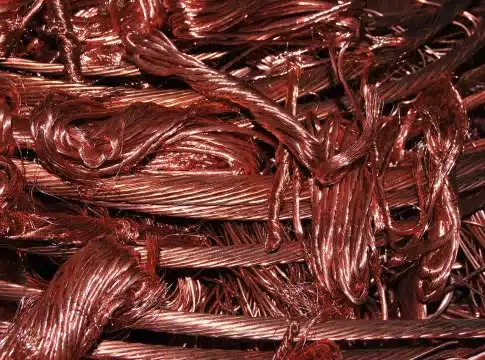SLB to Acquire 80% of Aker Carbon Capture: A Massive Boost for CCUS
Schlumberger aka SLB, the leading oilfield services company in the US Schlumberger aka SLB, the leading oilfield services company in the US has acquired a majority stake in Norway’s Aker Carbon Capture to advance their carbon capture technology at an industrial scale.
This merger, announced in late March 2024, is a significant step in reinforcing the decarbonization objectives of both companies.
Unlocking the SLB- Aker Carbon Capture Deal
SLB is set to acquire 80% of Aker Carbon Capture Holding (ACCH) for NOK 4.12 billion, including the operations of ACC. ACC will retain a 20% ownership, cementing its role as a key player in the partnership.
SLB will also integrate its carbon capture business into the merged entity. Over the following three years, SLB could make extra payments of up to NOK 1.36 billion depending on the business’s performance.
The regulatory approval of the transaction is pending but expected to close by the second quarter of 2024.
With SLB’s merging into ACC, the stage is set to leverage technology, expertise, and delivery platforms. It promises to reshape the landscape of carbon capture and utilization.
Olivier Le Peuch, CEO of SLB, emphasizes the urgent need to scale carbon capture technologies to meet global net-zero targets.
She has also highlighted the importance of lowering the operational cost and has noted,
“Crucial to this scale-up is the ability to lower capture costs, which often represent as much as 50-70% of the total spend of a CCUS project. We are excited to create this business with ACC to accelerate the deployment of carbon capture technologies that will shift the economics of carbon capture across high-emitting industrial sectors.”
SLB and ACC aim to accelerate the deployment of carbon capture solutions across high-emission industries, catalyzing a transformative shift in the economics of carbon capture.
SLB’S carbon budget curve:
Source: SLB
SLB’s sustainability report 2022 charts out:
“The carbon budget curve shows the reduction in CO2 e emissions needed over the coming century to limit the global rise in temperature to only 1.5 degrees C, as set by the Paris Agreement. Climate change projections show that the world will reach the budget for this target just eight years from now—in 2030.”
SLB’s mission is to balance emissions in the coming decades with ongoing net negative carbon actions post-2050 to safeguard the planet.
SLB: Pioneering Pathways in New Frontiers
Last year, SLB signed a strategic partnership with Microsoft and the Northern Lights joint venture. It underscored the crucial role of digitalization in streamlining carbon capture workflows.
From SLB’s official website, we discovered that the company is developing extraordinary industry-leading CCUS technologies to address CO2 emissions.
We have streamlined their work ethics below:
Select and design sequestration sites for carbon capture and treatment. Construct high-quality wells to ensure long-term integrity.
Monitor CO2, verify performance, and assure regulatory compliance.
Use digital tools- automation, AI, data management, and sophisticated sensors to enhance operations.
Pioneer an advanced technology portfolio tailored to support CCUS operations throughout every project phase.
SLB’s collaboration with Aker aims to enhance the efficiency and scalability of carbon capture operations. The former can demonstrate its expertise by integrating cloud-based platforms and advanced simulation systems.
READ MORE: Exxon Buys CO2 Pipeline Operator, Betting $5B on Carbon Capture (carboncredits.com)
Aker’s Global Carbon Capture and Storage (CCS) Ambition
Carbon capture and storage (CCS) reduces or removes CO2 emissions, offering industrial emitters viable decarbonization options. The International Energy Agency (IEA) strongly believes that “reaching net zero will be virtually impossible without CCUS.”
The IEA estimates that by 2030 the world will need to capture over one gigaton of CO2 annually. This figure is expected to surge over six gigatons by 2050.
Egil Fagerland, CEO of ACC has noted,
“The decision to combine ACC and SLB’s carbon capture business is underpinned by a strategic vision that reflects our commitment to accelerate the industrial adoption of carbon capture,”
He also believes that the company’s integrated suite of technologies and extensive global reach will scale up its profits. Consequently, it would benefit their customers, employees, and shareholders.
In parallel with the merger, Aker BP and OMV (Norge) AS have secured a Poseidon license, in CCS on the Norwegian Continental Shelf. The Poseidon license has the potential to store over 5 million tons of CO2 per year. It paves the way for the injection of captured emissions from industrial sources across North-West Europe.
Image: A typical CCS value chain:
source: Aker Carbon Capture
Furthermore, the US government’s commitment has also fuelled the momentum to combat climate change. The Biden Administration’s ambitious emissions reduction targets have spurred investment in carbon capture initiatives. In this mission, technology and innovation will play a pivotal role in achieving net zero by 2050.
The merger between SLB and Aker Carbon Capture ushers a new era in industrial carbon capture. United with a common vision, these industry titans should lead the way to a greener future.
FURTHER READING: Nvidia AI Tech Ramps Up Carbon Capture & Storage Predictions 700,000x (carboncredits.com)
The post SLB to Acquire 80% of Aker Carbon Capture: A Massive Boost for CCUS appeared first on Carbon Credits.



